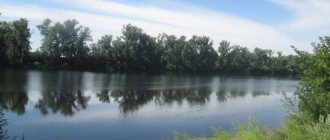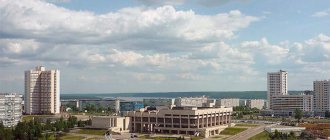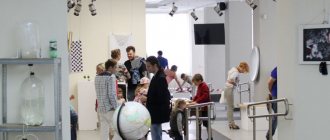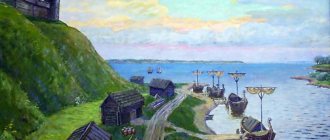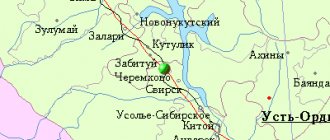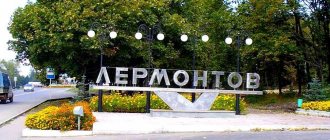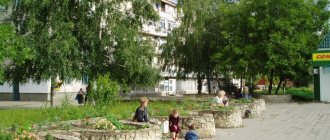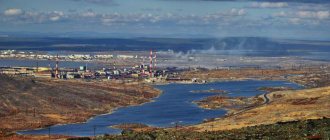Among the spurs of the Ural Mountains in the Perm region, the ancient city of Ocher has been living and developing for several centuries.
It is separated from Perm by 122 km, but this path is worth traveling to get a closer look at the rich history of the city.
Enjoy numerous attractions and see with your own eyes the Permian Park, dedicated to the prehistoric reptiles that lived in these areas many millions of years ago.
Story
Mentions of the area along the Ocher River are known long before 1596, when Tsar Fyodor Ivanovich the Blessed allowed the Bashkir peoples to live on these lands.
Russian settlers, led by Nikita Grigorievich Stroganov, began to develop this area in 1597, building the fortified Ochersky fort on the river bank.
Additional information: these uninhabited Ural territories were granted by Stroganov back in the 16th century and were passed on from generation to generation by right of inheritance.
The city of Ocher itself begins its history in 1759, when Elizaveta Petrovna gave Alexander Sergeevich Stroganov her Greatest permission to build an ironworks.
Under the leadership of the count, colossal work was carried out on cutting down forests, erecting factory buildings and installing smelting furnaces.
The production of cast iron began in 1761, and since then the Ocher metallurgical plant has ranked among the largest enterprises in Russia and Europe of that time.
Additional information: The second owner of the plant was the son of Alexander Sergeevich - Pavel Aleksandrovich Stroganov, at whose whim he was called “Citizen Ocher”.
Despite the fact that the count himself visited these lands once in his childhood, and controlled the plant remotely, his personality and biography formed the basis of two works of Russian literature (Yu. Tynyanov, “Citizen Ocher” and V. Pikul, “Count Popo - Citizen Ocher”).
The successful operation of the factory continued for more than a century and a half, until 1909, when the production of cast iron in these places ceased to be profitable. In 1911, the plant was declared unprofitable and closed.
A new round of development of the Ochersky plant began in 1913. The production of agricultural machinery and components for artillery guns was opened in its buildings.
In the 1930s, the production of oil refining equipment began on the basis of the plant’s facilities, and during the Great Patriotic War - 120 mm min.
Due to the expansion of production and the assignment of city status in 1950, the population also increased.
To meet the needs of the residents, agriculture began to actively develop, a bread and food processing plant and a dairy factory appeared. A lumber production plant opened.
Now the city has a well-developed infrastructure, there are kindergartens, schools, and hospitals. The population of modern Ocher is 14,000 people.
City code 617140.
Ochersky Pond
Plunging into the city's past, we set off to meet its present. And the first thing we met was the city pond.
Although not quite so - on the way from the museum to the pond we passed a huge number of historical buildings of the century before last, as well as Pavlovskaya Alley - a small piece of road framed by trees and benches. Initially, the object was named Date Alley, but later it was renamed in honor of Pavel Stroganov.
Ochersky Pond is one of the most popular attractions of the city. It appeared, like most man-made reservoirs in the Urals, as a result of the construction of a factory dam.
Tourists are attracted here not only by the beauty of this place - we must admit that even in winter the reservoir looks quite impressive - but also by the unusualness of its design. Right in the water, not far from the dam, there are three pedestals, on each of which there is a monument. These monuments are a direct gateway to nostalgia for the USSR.
In the warm season, structures partially hidden by water look even more interesting, but their winter views can also impress.
Coordinates: 57.88788,54.673139
origin of name
The city got its name from the river flowing here. There are two versions of this name, unusual for Russian lands.
In ancient times, the river was the border of the possessions of the ancient Bashkir tribe Geine. In the Tatar language, the word “otcher” means a line, a border, a limit.
Another version says that the name came from the Komi-Permyak dialect, in which the word “osh” meant “bear”, and “cher” - “stream, water stream”.
Several centuries ago, the local forests were indeed rich in this ferocious predator, and its image still adorns the city’s coat of arms.
How to get to Ocher?
From Perm, take the highway to Izhevsk, Kazan, Moscow and drive along it until the turn to Ocher. The distance from Perm is 110 km, from Yekaterinburg – 470 km. During this trip, you should definitely go to the man-made Kopan Canal.
Sources:
Wikipedia Ocher is a historical factory town. – Perm, 2009. Zoning scheme for the territory of the Ochersky urban settlement Chagin G.N. Historical knowledge of the peoples of the Urals in the 19th – early 21st centuries. – Ekaterinburg, 2011. Encyclopedia Perm region
Pavel Raspopov
UraloVed.ru
Where to walk and what to see in Ocher
It is pleasant to be in the city at any time of the year, and walking along its streets brings a lot of pleasure to tourists and townspeople.
Permian period park
More than half a century ago, in 1949, near the nearby village of Ezhovo, a geological expedition led by P. Chudinov discovered unique remains of dinosaurs from the prehistoric period.
Most of the skeletons are almost completely preserved. Many lizards were previously unknown to science, and some species of reptiles and amphibians were named after Chudinov.
Additional information: individual bones and skeletons taken from the excavation site joined the collections of many paleontological museums in the country and around the world. You can see the “Ocher lizards” at the Paleontological Museum in Perm, the Geological Institute of the Russian Academy of Sciences, they are even in the USA in Chicago and Germany.
The park of the Permian period appeared in Ocher on the 250th anniversary of the city and is located in the park behind the local history museum.
Here are small metal copies of Permian lizards with information signs next to them.
All exhibits were made by craftsmen at a local forge. Here you can “meet” Ivanthosaurus, Anplosuchus, Estemmenosuchus Mirabilis and many others.
The park is intended for family recreation: you can take photos with almost all the exhibits, animators work with kids, and there is a children's playground. Parents with children come here on weekends from all over the area.
Dovecote
Next to the path running along the Permian period park there is a small dovecote with rare bird species. She is looked after by park rangers. Dozens of pigeons soar high and delight passers-by with their grace.
Horse yard
Horse and wildlife lovers will be interested in visiting the Horse Yard, located on Ulyanovskaya Street, 152A in the village of Vereshchagino.
Here you can book a horseback ride in nature, a photo session with horses, and also visit the petting zoo.
You can find a lot of positive reviews about this place on the Internet. Horseback riding will cost 100 rubles, and a walk through the forest will cost 500.
Sundial in Ocher
An interesting decorative object is located at house 23 on Revolutionary Street. The sundial was produced at a local factory according to the design of engineers N.I. Maltsev and P.A. Vologodin in 1885.
On an antique pedestal stands a cast-iron bowl with a dial and a triangular-shaped pointer located on it.
This is the only clock of this kind in the Perm region. If you use them correctly, it is possible to determine the time very accurately. Previously, they used them to check their pocket watches. In 1967, an elegant cast fence appeared around the clock.
Victory Park
The renovated Victory Park is a pleasant sight for the eye, which can be visited near house 53 on the street. Lenin. Its size is more reminiscent of a square.
Visitors are greeted by an alley with arches in the shape of stars, followed by the inscription “Victory”; here you can relax on benches, the ends of which are also decorated with stars.
Square of victory
There is probably Victory Square in every Russian city. Ocher was no exception. It is located on Lenin Street near building 56.
There is a stone memorial, reached by wide steps. In the center of the monument, which resembles a waving flag in shape, there is a star-shaped depression. In the center of the recess is the Order of the Red Banner, and on the side are the numbers 1941-1945.
Ochersky Museum of Local Lore
Early in the morning we were ready to explore this amazing town filled with historical sights. We started, according to tradition, with the local history museum.
It is almost impossible to drive past the museum building - its sky-blue walls with snow-white columns catch your eye from afar. At first glance, you might think that the Palace of Culture used to be located here, but no - this two-story architectural miracle originally belonged to the Ochersky plant and was the count's factory office. And this fact in the history of the building has led to many unique solutions for the museum, which undoubtedly inspire every guest.
The first is the story that happened with the factory cash register. She tells that on July 4, 1878, two artisans from the Ochersky factory volost stole three thousand rubles. The crime was committed using a tunnel. A note was left at the scene of the theft: “30 days of work - money received on the 31st.”
But the craftsmen robbed not so much the plant as ordinary residents - the factory workers’ salaries were kept in the cash register. It is not difficult to guess that not only the police were looking for them, so the thieves were soon captured and punished.
The museum staff could not leave this story behind the scenes, so they preserved that same tunnel, designed and opened a separate exhibition, “ Secrets of the Factory Cash Office .”
The second highlight of the museum is the heritage of the factory office - the observation deck. Do you see the square extension on the roof of the museum? Previously, a person sat here around the clock, peering intently at the buildings of the city to see if there was smoke or fire anywhere. And now residents and guests of the city walk along the former fire tower, viewing the sights from above. From the observation deck you can see the city pond, St. Michael the Archangel Church and many buildings of historical value.
You can get here directly from the museum building - along a wooden spiral staircase.
Also in the Ochersky Museum of Local Lore you can learn about animal lizards - how and who discovered them (spoiler: they were discovered by accident when they were looking for the mineral volkonskoite , also known as green clay), what makes them unique, and even hear their growl.
In addition to information about animal lizards, here you can gain knowledge about the history of Ocher, the plant, and the traditions of peasant life. The Ochersky district was the territory of the Old Believers, so much of its way of life and way of life migrated precisely from the schismatics.
Inner courtyard of the museum: Ochersky fort, Park of the Permian period and the former home of the Young People
The museum’s courtyard also hides its interesting features. For example, to the right of the entrance we were met by those same prehistoric lizards. The Permian period park was created in 2009 for the 250th anniversary of the city of Ochera. Unfortunately, you won’t find real skeletons here - they were distributed between the Museum of Perm Antiquities and the Paleontological Museum of the Russian Academy of Sciences. But you can see exact copies of beast lizards, made of metal. There is also information support for each of them.
At the end of the alley we found two interesting wooden buildings. The first - a small wooden house with beautiful carved frames on the windows - is the former home of the Young People, which gave rise to the museum.
The second building is the reconstruction of the Ochersky fortress , a fortress that was erected to protect these lands from raids by nomadic peoples. It was with him that the history of the Russian people on the Ocher land began. Now the territory of the former prison is part of Okhansky, not Ochersky district.
Address: st. Lenina, 34
Copan Canal
But the canal is already outside Ocher – about thirty kilometers away. Before it, the road surface can also hardly be called ideal, although in the summer, especially after rains, it becomes even more difficult to pass.
The name of the channel comes from the word “dig”. This man-made canal connects the Chepets River with the Ocher River. It was needed to solve problems with the lack of water supplies in the Ochersky factory pond . The water that set factory mechanisms in motion in the 18th–19th centuries was sometimes not enough.
To replenish the volume of water in the Ochersky Pond, this grandiose canal was dug. Construction of the canal lasted two years - in 1813-1814.
The depth of the canal reaches 40 meters, the width is up to 100 meters, and the length is more than one kilometer. The volume of excavated soil, according to experts, amounted to more than 400 thousand cubic meters. And this, let me remind you, was done by the hands of serfs, without any equipment!
But, as it turned out, all this work was in vain. The power of the Cheptsa River turned out to be insufficient to even appreciably replenish the water reserves of the factory pond in Ocher...
You can see this man-made monument from above, or you can go down and look from a completely different angle. Metal steps lead to the bottom of the canal, however, partially hidden under the snow, they seemed unsafe to us, so we did not take any risks.
But even the upper angles are enough to feel the full scale of the work invested here - the canal looks so huge that the brain refuses to accept the fact that it was dug by hand.
Coordinates: 57.898118, 54.345501
Key "Student"
Stuffed to the brim with impressions, we loaded into the car and headed back to Ocher.
It was already getting close to evening, but on the way back we still decided to visit another small city attraction - a spring called “Student”.
The territory of the spring has been landscaped - there is a small house enclosing a spring, a staircase and an arch sign indicating the place.
And from here we went straight to the hotel to relax before a new day filled with information and impressions.
Mount Kokuy
Ocher is famous not only for prehistoric lizards, but also for prehistoric plants. As you know, the Ural Sea used to splash on the territory of the Perm Territory, which left behind many historical souvenirs.
There are especially many of them on Mount Kokuy . This museum of plant antiquities was discovered by accident - during the construction of the road to the new district of Ocher, a hill was excavated, in the cutting of which many petrified trees and remains of prehistoric animals were found.
We were assured that the relics can still be seen in the cut of the mountain. Of course, we couldn’t miss the opportunity to take away such an amazing souvenir as a souvenir.
Some members of our team were determined to find a bone or at least a tooth of a prehistoric animal, but alas, we were able to find only fragments of petrified trees. Although these finds struck us to the core.
Mount Kokuy is located between two microdistricts of the city, so getting to it is not so difficult. However, now (we don’t know if this is always like this in winter, or if we were just “lucky”) the road to it is covered with snow mounds, and the path turned out to be quite bumpy. But this place is definitely worth a visit!
Coordinates: 57.875326, 54.731054
